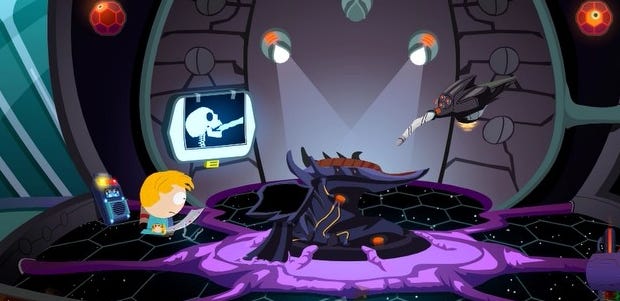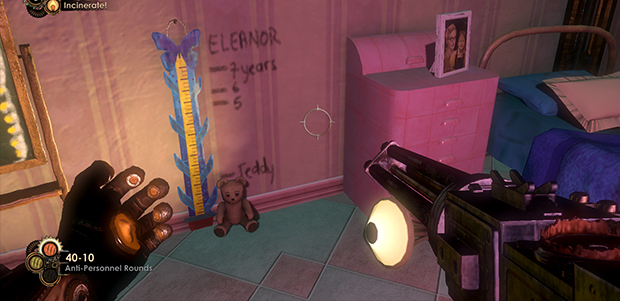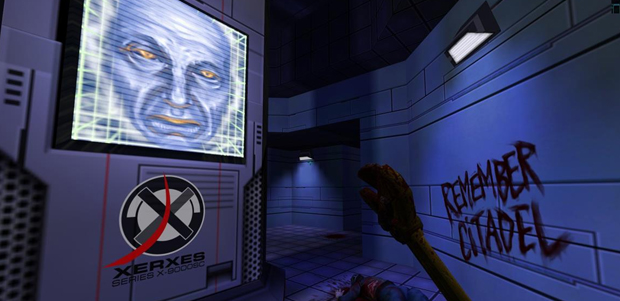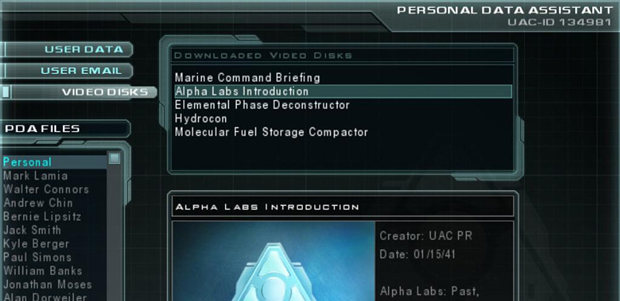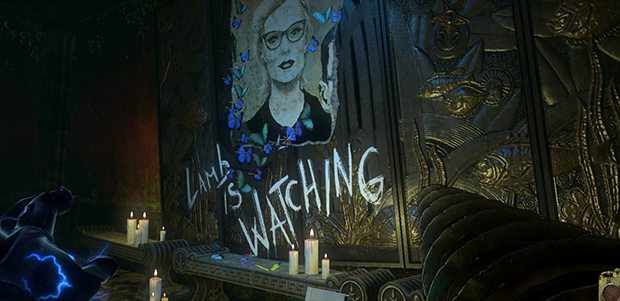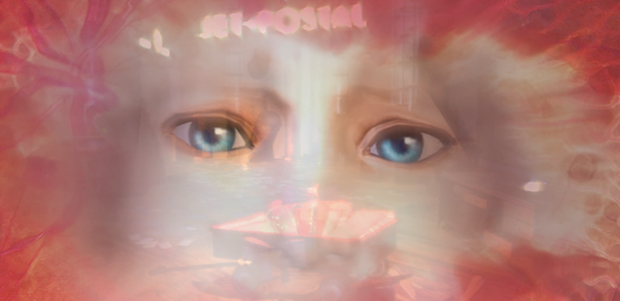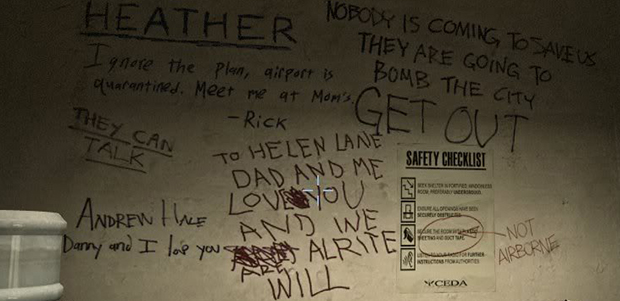The RPG Scrollbars: The Rise And Fall Of Audio Logs
"Hello? Is anyone still listening?"
"Day 4. I've looked everywhere, but I can't find anything to eat or a clue to get me off the ship. Just... more audiologs! They're everywhere! For some reason I keep listening to every minute of every one thinking there'll be some useful information but... they're just filler! Filler that's driving me to madness!" - South Park: The Stick Of Truth
It's hard to argue. They're kinda dumb. But I'm still fond of this stupid little trope.
The irony is that originally, the idea of audio logs was to increase immersion in worlds. Games had had notes and the like before, obviously, but System Shock pioneered the idea of scattering tapes around empty levels for you to listen to at will. It was a good fit. It allowed you to literally put the backstory on in the background while exploring, to tell the stories of characters you'd never meet, and to explain what had happened far better than any environmental storytelling at the time could or I'd argue still can. Vignettes can be awesome and many games set up cool shots like the aftermath of a Fallout poker game gone bad, but I argue that the most effective ones are linked to characters and backstories that you know. Here for instance is a shot that on its own is simply cute, but becomes heartbreaking when you know what's behind it.
Like most techniques, there's no need to go with just A or B. A physical vignette rewards exploration and contemplation, allowing you to build an image in your head of what happened in a more effective way than actually seeing it - especially in a violent game where blood and guts are a minute-by-minute thing. However, it tends to be more powerful still if there is a character to put with it, to add context, a sense of justice or unfairness, or something more than a faceless victim. The sense of hope dying in the dark. The last moments of comfort before the inevitable. The fate worse than death wearing a former lover's face. The knowledge that a hero never arrived.
The pragmatic origin of Shock's audio-logs too came from the right place. While the Ultima Underworld games had offered conversation, it was only by cutting away to a different interface that would have broken the mood. Unable to think of a good way of doing it, System Shock's designers simply murdered about 99.9% of the cast and never let you meet any that temporarily remained. There were still living characters around, but either they died just before you met them (Parovski), or were physically separated from you by millions of miles (Lansing, Brocail) or villains (Diego, SHODAN).
The problem is that the trick was so effective that it saw few big updates in the games that followed. System Shock 2 added ghosts and very occasional dying people to the mix, where sometimes you could see someone's last moments as well as find it on a tape. Bioshock greatly improved the nature of the stories being told. But with every game that used the technique, the more awkward it became. Everything about it. When System Shock came out, everyone expected that by now we'd all be using videophones and the like, as opposed to even voice taking a back-seat to more efficient text-messaging. Even if you can accept that, the tapes being scattered everywhere is another obstacle. Why is that tender love story scattered over multiple floors of this ship/city where anyone could find it? Who would sit down and record their secrets like this? Like a lot of gameplay mechanics, it's best not thought about, and lampshading problems rarely makes them go away. Mafia II for instance trying to jokingly justify main character Vito's ludicrous recovery speed after being repeatedly shot. Computers in villain lairs that serve two purposes - to give out passwords, and have angry e-mails from the management about people leaving passwords up on their screen.
At this point, it's kinda hard to take the whole thing seriously.
For my money, the death of audiologs came with Doom 3, which completely misunderstood their purpose and put them into a game that they didn't fit at all. They worked in System Shock because it was a game where the quiet moments felt natural, rather than a distraction from the game. More pressingly, the logs in Doom 3 rarely actually said anything. You arrive before the invasion and so the majority of the stuff you find early on is just people complaining about things feeling a bit creepy and uncomfortable. No shit. You're messing around with Hell. But they're not even writing in an ironically creepy way, with far too many just dull, dull corporate reports that you only have to bother with because they're probably going to have codes to locked doors in them somewhere. It was the design concept at its absolute worst, exposing the limits and revealing the artifice behind the gimmick.
After that, the only game that really drew any praise for using them was Bioshock and its sequel. These, as with some of the stuff in Shock 2, evolved the writing style in a fairly subtle way from System Shock. Compare the two games.
This morning Gunther was killed by one of the mutants. I have no time to dwell on the death of my husband, unless I want soon to join him. I think I understand now what SHODAN is doing. After destroying a bank of security cameras, the elevators almost came back on line. Somehow SHODAN must combine power from the CPU nodes with a constant input stream in order to maintain control over the station’s systems. If I can diminish the fiend’s "presence" here, I believe I can restore manual controls to the hospital level. Gunther, I'll stop him, I swear.
That's an early Shock log. Here's a Bioshock one.
Another New Year's, another night alone. I'm out, and you're stuck in Hephaestus, working. Imagine my surprise. I just guess I'll have another drink… here's a toast to Diane McClintock, silliest girl in Rapture. Silly enough to fall in love with Andrew Ryan, silly enough to-
Back in Shock 1, the audio logs are literally diaries - an apocalypse log. They're frequently intended to be read, heard, used. More technically, they're diegetic. They actually exist in the world. What we get in Bioshock is something else. They're snippets of conversation, they're overheard gossip, they're often taken straight from the character's minds. The tape-recorders are more an icon than in-world artifact, and not something we're meant to really think of in those terms. Fairly obviously. Few of them are willing to speak their mind while Ryan's forces might be listening, never mind record their treasonous thoughts and leave them lying around. We collect them via audiologs, but it would make about as much sense as to say that we pick up a psychic echo or similar, in much the same way that we see the ghosts acting out scenes. (Another evolution borrowed from Shock 2, though neither game uses them that much.)
The use of ghosts does however highlight why the audiologs have stuck around. The idea of doing something more visual appeals, and it's done okay in some games, like Everybody's Gone To The Rapture - no relation. As a replacement in a more active game though they're problematic, partly because of the extra time they take (say what you want about writing, but it's cheap!), they can't be easily replayed, they take away control of the player's progression for something that's often only ambient progression, they have to be in locations where the player can't be disturbed, and they're inherently hands-off. Bioshock 2 dropped ghosts entirely, though for a while it did continue the idea of 'genetic memory' by having playable flashbacks to Rapture in its prime. They were cut because they didn't really work. ("What Rapture was like in its heyday appeals on paper, but it meant you really couldn’t play the game. Players sleepwalked through each scene, which was pretty, but not particularly convincing.")
Bioshock 2 did advance the art in one way though, in a similar way to Deus Ex before it - putting more emphasis on 'live' characters. There were still audiologs to collect, but now far more of the plot was communicated through the case - Eleanor, able to jump into your head, villain Sofia, businessman Sinclair and the key members of the Rapture Family like Grace Holloway. Mechanically, their messages were no different from reading a log. The obvious difference is that as characters still with agency in the world, their ongoing stories were inherently tied to yours in a way that the audio-log leavers could never be. They could respond to your decisions, your evolving character, provide warnings, taunt, and as Deus Ex had demonstrated before it, give the illusion that things were happening in parts of the city that you weren't personally in a position to see. It wasn't entirely effective, and you really had to give the game the benefit of the doubt to think that the crazed splicers you encountered were part of a more civilised society when not shrieking and trying to beat you to death. But it was something. And with those messages doing much of carrying the main story and leaving the audiologs for backstory, it helped push them back where they needed to be.
Come Bioshock Infinite however, the trick wasn't working so well. A big problem was that part of the reason we accepted audiologs previously was the acceptance that they were a means to an end. Games have plenty of them. Dialogue trees for instance. With Infinite though, having characters, having conversation, being able to show the world in all its glory, those audiologs became... well... ridiculous. At best - at best - they could be grandfathered in along with the new Plasmids (ignoring their shared origin, as revealed later on) as simply Something A Shock Game Is Expected To Have. At worst, they were a massive distraction from the action and a lingering sense of artificiality. The game already had so many methods to tell its stories, from conversations to tears to museums, it had outgrown them. Something which you can see it recognising simply in how few of them there are compared to the earlier Shock games - only about 80 compared to around 250 in Shock 2 and around 120 in Bioshock 1.
But does any of this mean that games shouldn't use audio logs any more? I'd argue not. Like any technique, they can be used for good and ill. The problem with them is that they've been over-used; treated as the only way of conveying ambient narrative and setting up vignettes, even in situations where it wasn't actually that practical. They worked in System Shock for very specific reasons, and when System Shock 3 comes out, I'll be sad if it doesn't do something similar to breathe life back into SHODAN's victims. That said, it's not enough to just scatter them around and party like it's 1994. Maybe for instance there can be a twist to the formula where you snag chips from brains and then de-encrypt them, learning the story in a more non-linear order while interacting with the live characters. Different forms of notes, like the graffiti on the walls in Left 4 Dead 2's safehouses being used to convey ongoing stories between familiar characters who you learn to differentiate via their handwriting and who they conduct conversations with in the dark, where SHODAN's sensors can't see. Tampered logs, leading you astray after so many games where dead men tell tales, but never porkies. Or overheard radio signals that you can't tap into, painting a picture of the failed rebellion you're about to walk into. Or many other extrapolations of the basic concept, either untried in a big game or yet to be fully tapped out.
Either way, new ideas were needed before South Park put a railway spike through the traditional form. Now, there's no going back. We shouldn't kill audio logs per se. As little chunks of narrative, they serve a noble purpose and nothing else quite serves it. But it's not 1994 any more. It's time for an upgrade, while people still bother listening.
